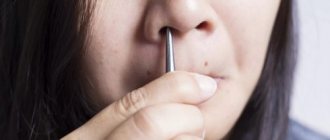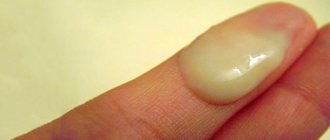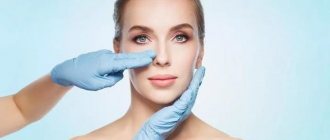Redness of the nipple areola can occur due to many reasons. Some causes of red nipples are quite harmless when associated with cyclical changes in the body. Others talk about the development of a serious illness. Don’t torment yourself with guesses - consult a mammologist or gynecologist in a timely manner. After examination and palpation, the doctor may send for additional diagnostics to make an accurate diagnosis.
Natural causes
Only a qualified specialist can identify the true cause of redness around the nipples. Not in all cases, redness around the nipple is caused by the development of pathology.
The most common reasons:
- lactation
- incorrectly selected underwear
- allergic reactions
Breastfeeding your baby may cause sore and red nipples. This phenomenon is especially common among young mothers who do not know how to properly attach a baby to the breast.
If a woman is a nursing mother, then a number of factors need to be considered:
- Lactostasis - stagnation of milk is often accompanied by painful sensations in the breasts and redness of the areolas and nipples. Lactostasis is characterized by dysfunction of the outflow of milk from the milk ducts, which leads to unpleasant symptoms.
- Nipple injuries - there are a number of reasons why injury can occur. This is an uncomfortable bra, errors in attaching a newborn to the breast, and an incorrectly formed baby’s bite.
- Candidiasis is a fungal infection that not only causes redness on the nipples, but is also transmitted to the baby during breastfeeding.
If the woman is not a nursing mother, then the reason may be hidden in incorrectly selected underwear. Synthetic fabric and a small bra size can cause redness near the nipple and also cause the development of many diseases. Carefully select the size of your underwear and opt for products made from natural fabrics.
Allergic reactions are also a common cause of red nipples. First of all, it is necessary to identify the allergen and eliminate it from everyday life. For this purpose, it is recommended to visit an allergist.
The most common allergens are:
- Food
- synthetic fabric from which clothing and underwear are made
- aerosols for armpits,
- laundry detergent/fabric softener
- body creams
In any case, you need to consult a specialist who will help you get rid of discomfort and understand the reasons for its occurrence.
Syringe
Some use the classic version with a breast pump.
I do not recommend this technique, as it can deform the shape of the breast itself, which will further worsen the aesthetic component. Therefore, it is better to pull out the nipples so that they stand using such a simple tool as a syringe.
On the side where the needle is usually inserted, the edge is cut off. To avoid tissue damage due to an uneven cut, you need to pull out the piston and then insert it from the opposite side. For the desired effect, the diameter of the cylinder must match the size of the nipple.

To stretch, you need to get the effect of slight discomfort. When removing the syringe, the pressure should be released slightly. To do this, the piston moves in the opposite direction. Then the nipple will come out easily. The homemade product should also be kept clean. To do this, streams of hot water are used.
Pathologies
In addition to the harmless reasons associated with lactation and allergens, there are a number of pathological processes also characterized by reddened and sore nipples. It is impossible to make an accurate diagnosis based on just one symptom; to do this, it is necessary to carry out a number of diagnostic procedures to create the most complete picture of the disease.
If your nipples are red, the following pathologies may be the cause:
- Staphylococcus and streptococcus - infection of the nipple area through microcracks. This pathology in the nipple area is extremely rare. Most often, the infection manifests itself in the summer when there are high temperatures, when the activity of staphylococci and streptococci increases. Infection can also occur through contaminated clothing. The pathology is characterized by the appearance of redness on the nipple, followed by a rash - conflict. The duration of the disease is about 4 weeks, after which the purulent conflicts die off. With timely treatment, no traces remain on the skin.
- Neurodermatitis, dermatitis are pathologies associated with dysfunction of the central nervous system, metabolism, and internal secretion. If your nipples itch and hurt, you should immediately go to a neurologist to determine the exact cause. The thing is that chest discomfort is often the final stage of disorders in the nervous system.
- Eczema is formed at the genetic level, as well as due to dysfunction of the central nervous system. Symptoms of eczema, including reddening of the nipples, are caused by tension, depression, and overwork.
- Psoriasis – a reliable cause for the appearance of this disease in the nipple area has not yet been identified. A red nipple as a symptom of psoriasis is a short-lived phenomenon. The redness subsequently gives way to psoriatic plaques. Psoriasis is a rather complex process that can be explained by the following factors: genetic predisposition, dysfunction of the metabolism or endocrine system, viruses, parasites, neurogenic and immune disorders.
- Paget's disease - carcinoma in this case concerns the milk ducts and spreads into the epidermis. The intraductal tumor grows, thereby causing redness of the areolas and nipples.
- Mastopathy is a benign lump that can be treated with medication.
- Mastitis is an inflammatory process, usually a consequence of lactostasis.

Proofreaders
The device is designed to pull out flat nipples.
They are convenient because they can be used under clothing, and not just at home. Visually they resemble linings, the work of which is based on creating a vacuum inside special cavities. To ensure a tight fit, gel is applied to the nipple.
The corrector has a valve in its design. a syringe is attached to it, which is responsible for creating a vacuum. When the pulling effect appears, the syringe is disconnected. It is important that sudden movements do not injure the chest.
You can remove the device by lightly pressing the valve. If the vacuum system is broken, the corrector falls off the breast. This also needs to be remembered.
At the initial stages, make sure that by the end of the training the nipples are standing, correctors are worn for no more than 2 hours a day. Then the exposure time is increased. It gradually increases to 8 hours a day.
This unit is quite powerful. Results can be seen after a few weeks. At the same time, it is very convenient due to the ability to hide under clothing using special chest pads.
Symptoms
Symptoms directly depend on the causes of redness. Each individual pathology has its own characteristics, which can only be recognized by an experienced specialist.
The symptoms are as follows:
- Breast injuries – itching, redness, and sometimes pain.
- Inflammation of the Montgomery tubercles - itching, burning and increased sensitivity.
- Hepatic infection - rash in the form of blisters, itching, redness, pain, burning, general malaise.
- Candidiasis – pain, redness, white coating, cracks, itching, ulcers.
- Eczema - severe itching, burning, ulcers and cracks.
- Paget's cancer - redness, pain, itching, burning, discharge, tightness in the chest.
- Dermatitis - cracks, swelling, erosion of the skin.
If, in addition to redness, your nipples hurt or sores and cracks appear on them, as well as any of the above symptoms, you should urgently visit a doctor for further diagnosis and timely treatment.
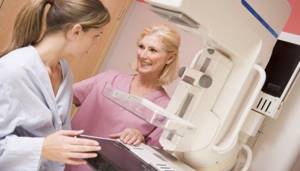
First sign of pregnancy
It is inherent in nature that a woman’s body is designed to create new life. As soon as the egg is fertilized, he begins to prepare for bearing the fetus. Many symptoms can notify the expectant mother of her interesting situation faster than experienced specialists or modern diagnostic equipment can do.

An obvious symptom is a change in the appearance of the nipples. They become darker, harden and swell. Often there is a feeling of discomfort and mild pain in this area. A woman may feel that her bust has even become one size larger.
Diagnostics
Diagnostic procedures are carried out only after an initial examination by a doctor. The specialist will listen to complaints, conduct an examination and refer you for further diagnostics in order to make a diagnosis.
The diagnostic procedure includes:
- History - the patient is questioned regarding redness of the nipples, as well as external examination and palpation. Having collected the necessary information, the doctor makes a decision regarding further examination.
- Ultrasound of the mammary glands is necessary when lumps are detected in the breast; it helps to determine its presence, location, nature and stage of development.
- Biopsy – only required if nipple carcinoma is suspected. It is carried out by taking biomaterial with a needle and examining it for the presence of cancer cells.
- A general blood and urine test helps identify the causative agent of the inflammatory process.
- Allergen skin testing is only necessary to check for an allergic reaction or the presence of eczema.
- Mammography can only be prescribed to representatives of the fair sex who have entered menopause, and in rare cases to young girls. Mammography allows you to determine the presence of a tumor, its location and stage of development.
- MRI – used to monitor changes in the breast area, as well as determine the type of tumor detected.
The use of instrumental diagnostics is necessary only in cases where there is a suspicion of nipple cancer. Timely diagnosis and treatment help increase the chances of a complete cure, as well as reduce the risk of relapses.
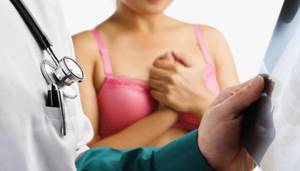
Treatment and prevention
To begin effective treatment, you will first need to identify the cause.
Common causes and methods of their treatment:
- Allergies – initially you will need to get tested and identify the allergen. In the future, you should avoid any contact with him. Food allergies require a complete overhaul of your diet and a special diet. Usually, eliminating the allergen acts as a treatment. Sometimes the doctor prescribes antihistamines in various pharmacological forms.
- Mastopathy, mastitis – physiotherapeutic treatment in combination with tablets and external preparations is necessary. Such therapy allows you to get rid of the disease in the shortest possible time.
- Candidiasis - first of all, it is necessary to relieve such unpleasant symptoms as burning and itching. For this purpose, medications are required to relieve irritation. Drugs are also prescribed to help activate the immune system and eliminate candida. A special diet is introduced. If not only the mother, but also the child is infected, then both will need treatment.
- Tumor – surgery is most often used in combination with chemotherapy, radiation or hormonal therapy. The set of procedures directly depends on the severity of the disease.
- Cracks - usually occur during breastfeeding. For prevention, it is necessary to carry out preliminary preparation of the mammary glands, and also avoid washing the skin of the breast with soap. Treatment consists of following feeding rules, using antiseptic and wound-healing agents. All medications for skin restoration must be agreed upon with a doctor.
You should not self-medicate or resort to traditional methods without first consulting a specialist - this can lead to a worsening of the condition. If your nipples hurt for a long time and there are other unpleasant symptoms, then a visit to the doctor should not be put off for a long time. Early diagnosis of serious pathologies allows you to get rid of the disease most effectively and quickly.
Emotional factor or illness
A less common reason why nipples become hard is stress. This change occurs in approximately three percent of women. The human body can be sensitive to worries and experiences. This leads to hormonal imbalance, and subsequently to a change in the menstrual cycle and a change in the appearance of the nipples.
Any disease is also a great stress for the body. Many young mothers have weakened immune systems during lactation. With an increase in body temperature, some of them experience stagnation of milk, the breast nipples begin to harden, swell and turn red.


